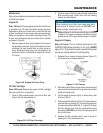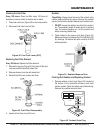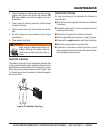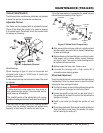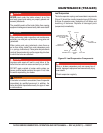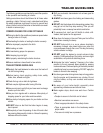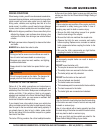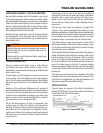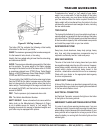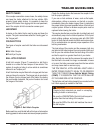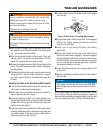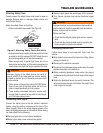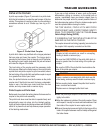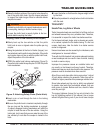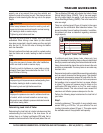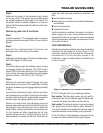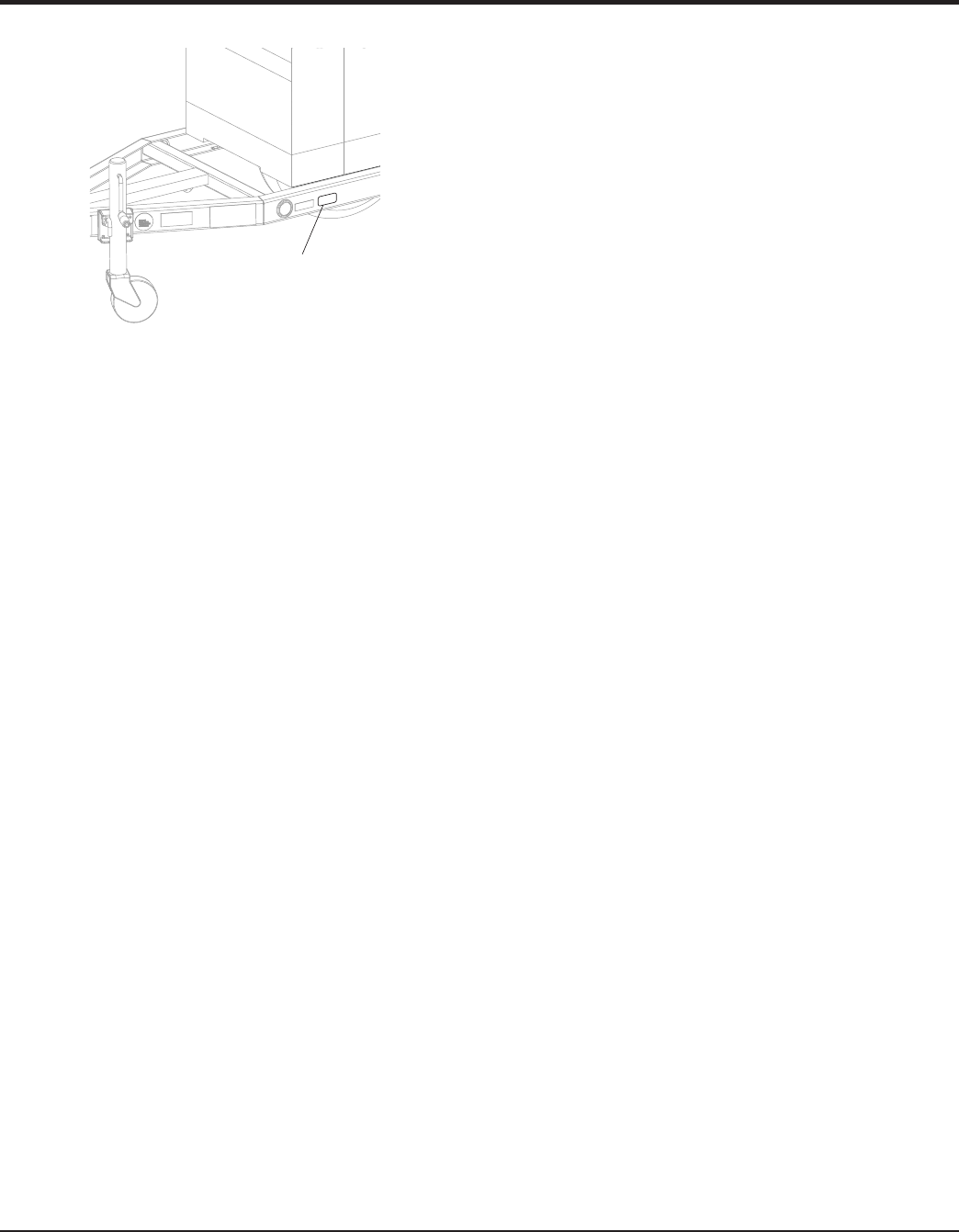
DA7000 SERIES GENERATORS • OPERATION AND PARTS MANUAL — REV. #5 (01/20/11) — PAGE 41
TRAILER GUIDELINES
Figure B. VIN Tag Location
The trailer VIN Tag contains the following critical safety
information for the use of your trailer.
GAWR: The maximum gross weight that an axle cansupport.
It is the lowest of axle, wheel, or tire rating.
Usually, the tire or wheel rating is lower than the axle rating,
and determines GAWR.
GVWR: The maximum allowable gross weight of the trailer
and its contents. The gross weight of the trailer includes
the weight of the trailer and all of the items within it. GVWR
is sometimes referred to as GTWR (Gross Trailer Weight
Rating), or MGTW (Maximum Gross Trailer Weight). GVWR,
GTWR and MGTW are all the same rating.
The sum total of the GAWR for all trailer axles may be less
than the GVWR for the trailer, because some of the trailer
load is to be carried by the tow vehicle, rather than by the
trailer axle(s). The total weight of the cargo and trailer must
not exceed the GVWR, and the load on an axle must not
exceed its GAWR.
PSIC: The tire pressure (psi) measured when cold.
VIN: The Vehicle Identifi cation Number.
EMPTY WEIGHT: Some information that comes with the
trailer (such as the Manufacturer’s Statement of Origin)
is not a reliable source for “empty” or “net” weight. The
shipping documents list average or standard weights and
your trailer may be equipped with options.
VIN TAG
VIN TAG
To determine the “empty” or “net” weight of your trailer,
weigh it on an axle scale. To fi nd the weight of the trailer
using an axle scale, you must know the axle weights of
your tow vehicle without the trailer coupled. Some of the
trailer weight will be transferred from the trailer to the tow
vehicle axles, and an axle scale weighs all axles, including
the tow vehicle axles.
TOW VEHICLE
The towing hitch attached to your tow vehicle must have a
capacity equal to or greater than the load rating of the trailer
you intend to tow. The hitch capacity must also be matched
to the tow vehicle capacity. Your vehicle dealer can provide
and install the proper hitch on your tow vehicle.
SUSPENSION SYSTEM
Sway bars, shock absorbers, heavy duty springs, heavy
duty tires and other suspension components may be
required to suffi ciently tow the trailer and pump.
SIDE VIEW MIRRORS
The size of the trailer that is being towed and your state
law regulations determine the size of the mirrors. However,
some states prohibit extended mirrors on a tow vehicle,
except while a trailer is actually being towed. In this
situation, detachable extended mirrors are necessary.
Check with your dealer or the appropriate state agency
for mirror requirements.
HEAVY DUTY FLASHER
A Heavy Duty Flasher is an electrical component that may
be required when your trailer turn signal lights are attached
to the tow vehicle fl asher circuit.
ELECTRICAL CONNECTOR
An Electrical Connector connects the lights on the trailer
to the lights on the towing vehicle.
EMERGENCY FLARES AND TRIANGLE REFLECTORS
It is wise to carry these warning devices even if you are
not towing a trailer. It is particularly important to have these
when towing a trailer because the hazard fl ashers of your
towing vehicle will not operate for as long a period of time
when the battery is running both the trailer lights and tow
vehicle lights.



